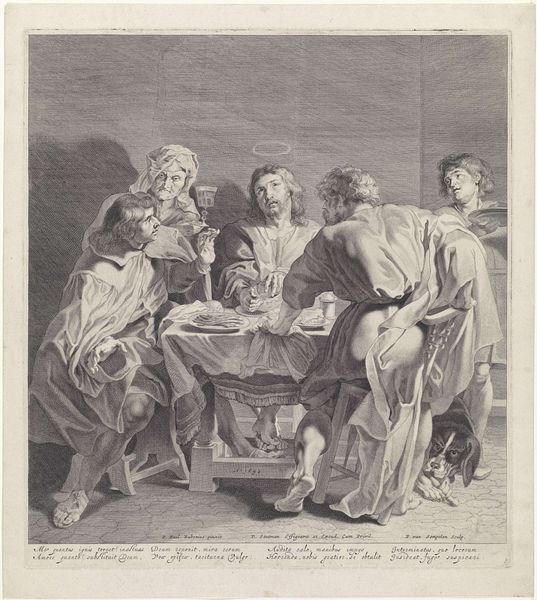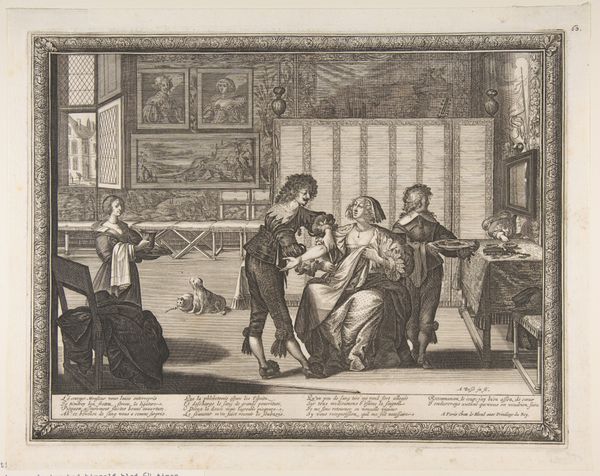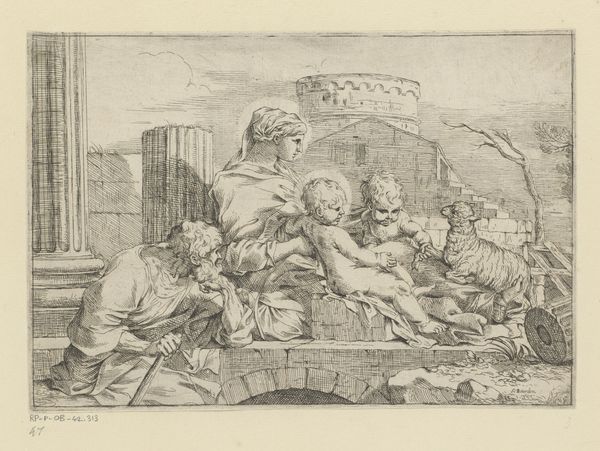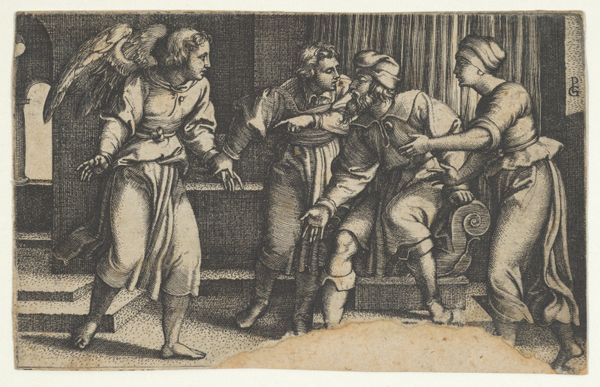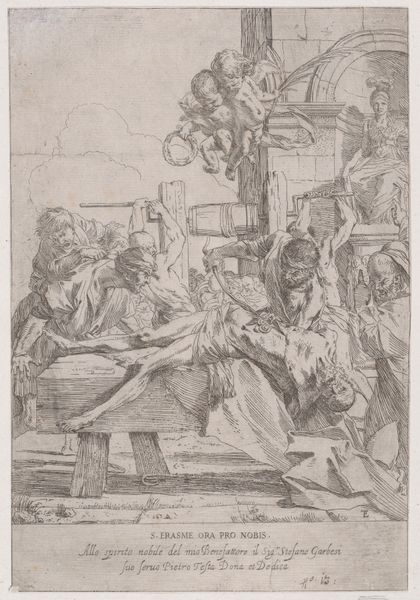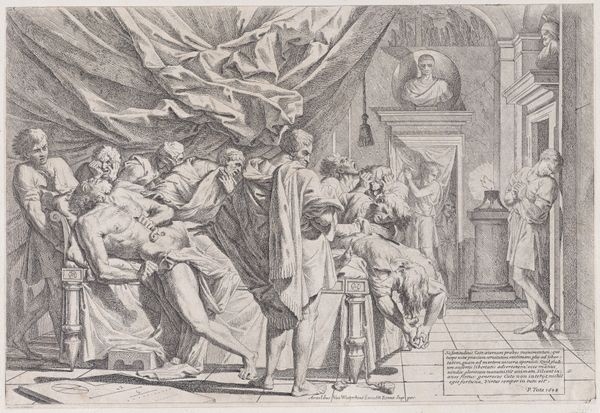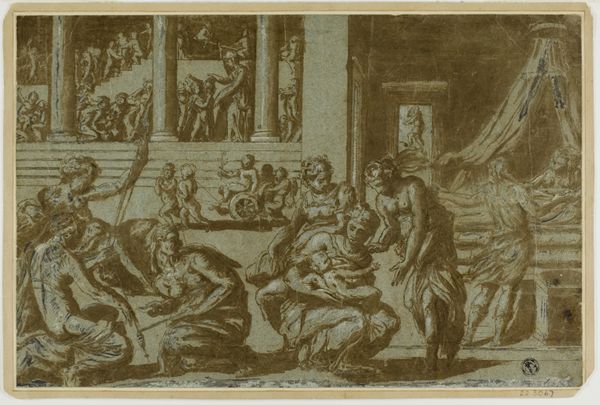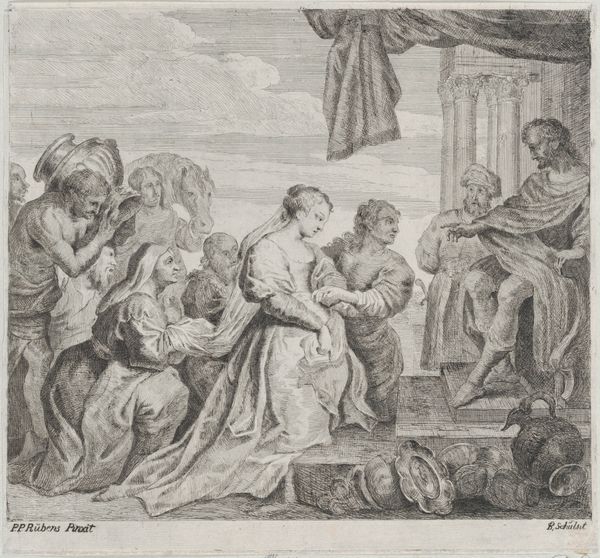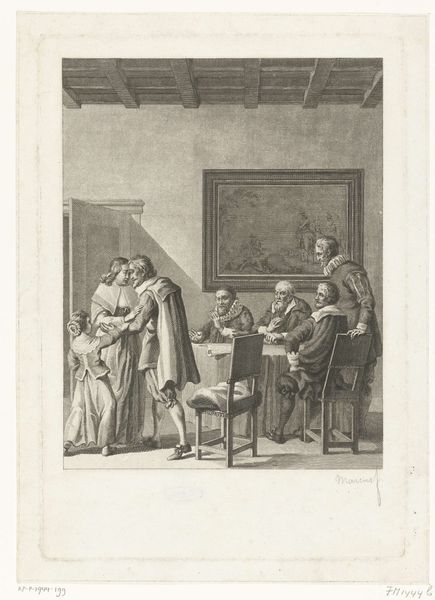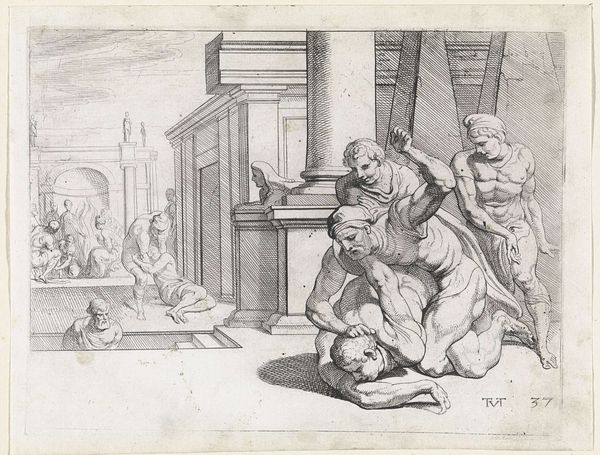
print, engraving
#
narrative-art
#
baroque
# print
#
genre-painting
#
history-painting
#
engraving
Dimensions: height 391 mm, width 514 mm
Copyright: Rijks Museum: Open Domain
Editor: This engraving, "Maaltijd in Emmaüs," probably made sometime between 1630 and 1652, shows what looks like a biblical scene with some really interesting details, like a cat and dog in the corner! It seems to me, though, that there’s a definite sense of division here; some characters seem connected while others don’t. What catches your eye in terms of the deeper layers of meaning? Curator: That division you observed is interesting, especially when thinking about the cultural context in which this piece was created. These kinds of domestic scenes, although ostensibly religious, often also comment on contemporary social structures. Do you notice any signifiers of wealth or poverty, perhaps in the figures’ garments, or even in their relationship to the pets you mentioned? Editor: Now that you point that out, the fabrics definitely look fine. The presence of the cat and dog, so comfortable, does speak to the luxury of the setting. It's curious that in the background there's something ominous outside, visible from the window; is it some kind of war scene? Curator: Precisely! What does that juxtaposition suggest to you, having this interior scene of comfort contrasted with the implied turmoil outside? Consider the intended audience of such a print. Editor: Perhaps the artwork means to underscore the precariousness of their privileged lives at a time of constant religious conflict, or to encourage the people to contemplate their own fate. But I also realize it may be a reminder that privilege and suffering coexist, each shaping our perception of the other. Curator: Indeed! By encouraging these kinds of critical readings, we can see how these ostensibly religious scenes engage directly with questions of social justice and historical awareness that continue to be relevant today. Editor: I hadn't considered the work in that light before, seeing it more as just an illustration of a bible story. I'll definitely look at art from this period differently going forward.
Comments
No comments
Be the first to comment and join the conversation on the ultimate creative platform.
